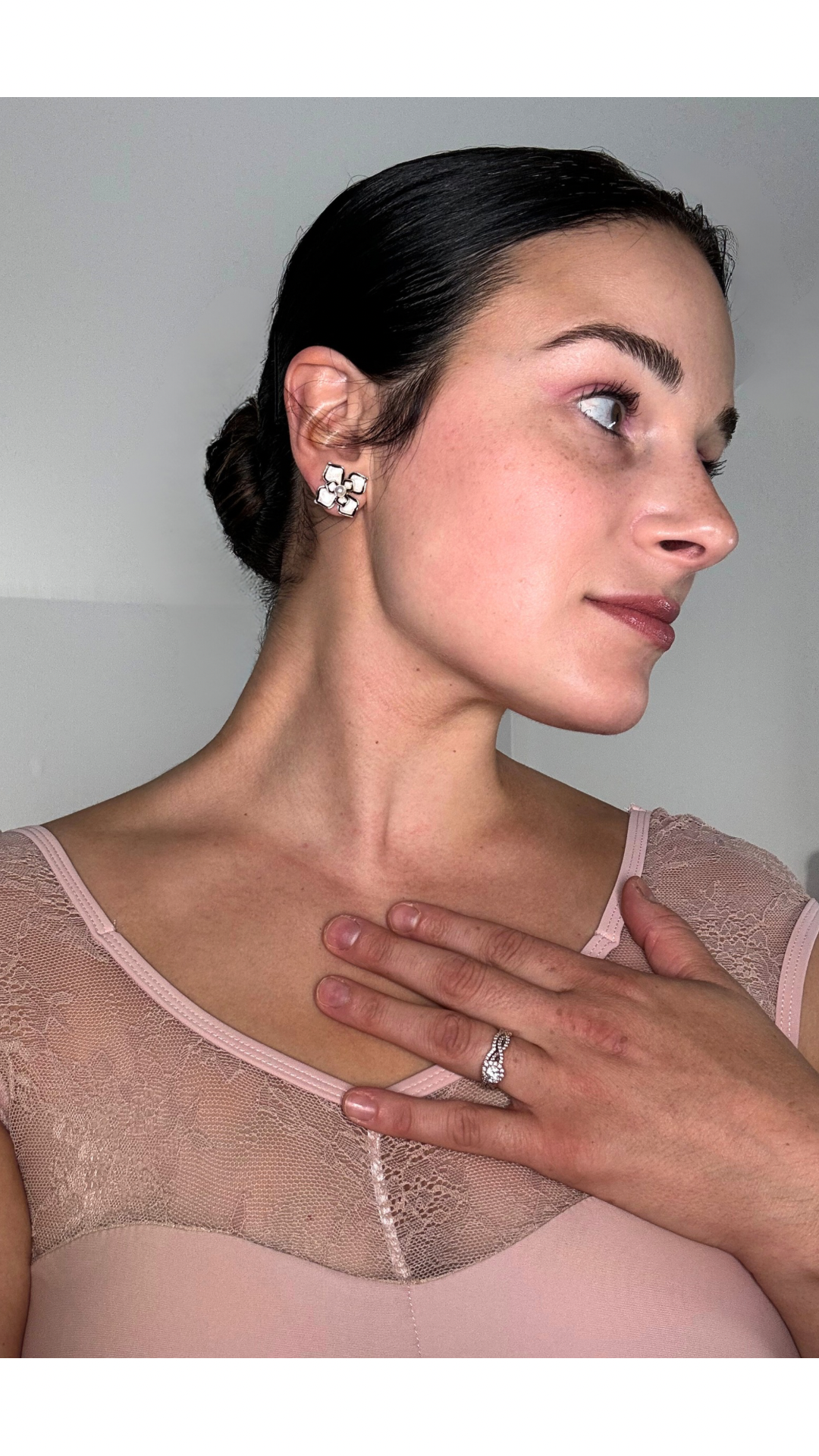Improve ballet pirouettes: By NOT Turning
- Veronica K

- Nov 7, 2023
- 3 min read

Are you standing in class performing pirouettes on repeat because you just want to improve your pirouettes? Well, it's time you stop practicing your pirouettes to improve! Why would you stop practicing pirouettes to improve pirouettes? Simple, sometimes the problem is not with the pirouette itself but, imbalances that settle in the body derailing our pirouettes.
In this article, I will explain to you the key areas to focus on when improving pirouettes in ballet class. This article serves as a resource for both dancers and dance educators to improve pirouettes for ballet dancers. Below you will also find a link to a simple routine to improve pirouettes with 3 key exercises.
Section 1: Core Strength and Postural Stability
To improve pirouettes, it's crucial to understand the significance of core strength. The core muscles play a pivotal role in supporting postural stability and balance necessary for executing graceful and controlled turns. While practicing pirouettes repeatedly might seem like a quick fix, enhancing core strength is fundamental for sustained improvement. Strengthening the core muscles, including the abdominals, obliques, and lower back, helps maintain proper alignment and stability throughout the pirouette. A great exercise I love to give students is called Pallof press. This exercise focuses on the anti-rotation aspect which helps dancers hold core activation while fighting against the forces of rotation. When the core is active properly, it helps keep everything in one piece to improve pirouette mechanics.
Section 2: Proprioception and its Role in Pirouettes
Proprioception, the body's awareness of its position in space, is essential for executing a pirouette. It involves the nervous system's ability to sense the body's movements and positions without relying solely on visual cues. Developing proprioception is crucial for achieving balance and control during turns. Understanding where your body is in space without visual aid significantly contributes to mastering pirouettes. In order to improve proprioception, it is important for dancers to practice balance exercises with eyes closed as well as open. If a dancer is not quite ready to completely close their eyes during a balance exercise, introduce blinking fast and slow to improve pirouettes.
Section 3: Lower Extremity Strengthening
Strong lower extremities, particularly the ankles and foot muscles, are vital for maintaining lower leg balance in the passé position and executing pirouettes with precision. Both concentric strength (the ability to raise to relevé) and eccentric strength (the controlled lowering of the pirouette) are essential for executing turns with control and stability. I encourage dancers to always work in parallel when it comes to practicing lower extremity strengthening. Why? Because if a dancer has a tendency to roll out or in on their ankles, it will likely repeat occurrence with practice in turnout. Working in parallel, ensures that the dancer has all five toes down on the floor with a neutral ankle. For more exercises to improve pirouettes see my foot and ankle course here.
Section 4: Dynamic Surface Balance Training
Practicing balance on both static and dynamic surfaces is essential for improving pirouettes in ballet. Dynamic surface training challenges the body to adapt to different environments, enhancing stability and control. In addition to changing the surfaces to improve pirouettes, incorporating movements like turning the head during balance exercises simulates the spotting technique used in pirouettes, improving coordination and reducing dizziness. I love training on my extra large yoga mat because it provides me with a dynamic safe surface. To grab my mat click here to get 5% off your order. *Note I do earn a small commission on these purchases.
Section 5: Refining Ballet Technique for Improving Pirouettes
After focusing on core strength, proprioception, lower extremity strength, and dynamic balance, refining technique becomes paramount. Seeking guidance from a professional ballet instructor like myself is crucial to improve pirouettes. Factors such as arm timing, head movement, preparation positioning, and passé placement are essential elements contributing to a successful ballet pirouette. To begin your evaluation process click here and book an appointment with me using code 10FORPRIVATES for $10 off your appointment to start improving pirouettes and balance!
Refining one's technique is an ongoing process that requires continuous practice and feedback from knowledgeable instructors to achieve the finesse and precision necessary for impeccable pirouettes.
Remember, a holistic approach encompassing strength training, proprioception, balance, and technique refinement is essential for consistently improving ballet pirouettes.
Check out the below video for 3 key exercises to improve ballet pirouettes now!
References
Koutedakis, Y., & Sharp, N. C. (2004). The fitness for purpose of proprioception in musculoskeletal rehabilitation: a review. Physiotherapy, 90(3), 180-196.
Liederbach, M., & Richardson, M. (2004). The functional and biomechanical principles of dance technique: An overview. Journal of Dance Medicine & Science, 8(2), 45-50.
Steinberg, N., Hershkovitz, I., & Zeev, A. (2016). The effectiveness of a novel biomechanically-based exercise program in treating anterior cruciate ligament injury in a young dancer: A case study. Journal of Dance Medicine & Science, 20(2), 90-96.




Comments